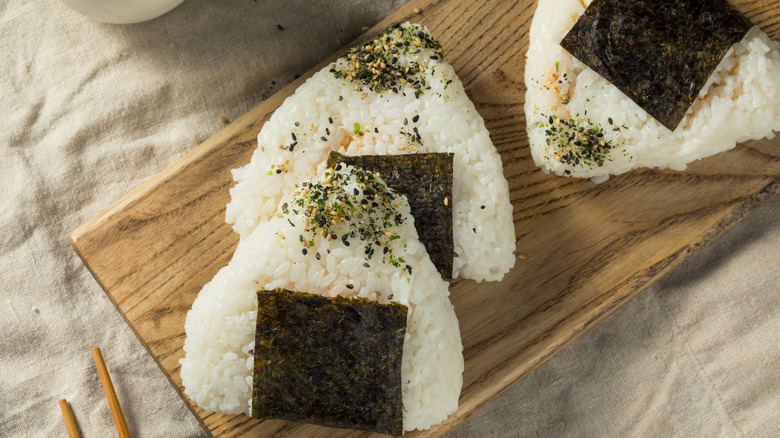The Historical Connection Between Bento And Train Travel In Japan
What does a typical travel-day meal look like to you? For some, a sandwich, wrap, salad, or even a grab-and-go protein bar will do the trick. A flavorful meal full of assorted bites may not traditionally come to mind when wrangling itineraries and passports. During plane, train, and bus rides, the cuisine is focuses on convenience. This was not the status quo for those traveling via trains in Japan.
Traditional in Japanese cuisine, Bento boxes serve as an all-in-one lunch box that combines starches, proteins, and produce such as fruits and vegetables in one balanced and hearty meal, according to Masterclass. With original bento boxes serving onigiri rice balls back in the 1600s, the style, cuisine, and even the box material of a bento have evolved.
Famously, the bento style has evolved to fit all different occasions, seasons, and preferences. Believe it or not, train travel throughout Japan has landed its special bento box — this box is called the Ekiben bento. How did a famous style of Japanese cuisine make its connection with Japanese train travel? The evolution may surprise you.
Ekiben, the official bento box of Japanese train travel
Japan's current train travel is world-renowned and known for its speed and efficiency; however, this was not the case back in the late 1880s. When the train route from Ueno to Utsunomiya opened back in 1885, the journey would take travelers an estimated 3 hours and 30 minutes to get from point A to point B (via the Kome-Academy). In contrast, now that same trip takes an estimated 50 minutes. In the 1800s, three and a half hours was a long way to go without a meal.
As trains would move from station to station, locals took advantage of selling local delicacies from neighboring Japanese towns and cities. It's noted that the style of bento Ekiben began in the Utsunomiya Station in 1885 on July 16th, per Live Japan. Their bento-style included onigiri rice balls made from rice and picked daikon radish packed into bamboo leaves.
You would assume that each Ekiben bento would be enjoyed from the comfort of a train seat with a long day of travel ahead? Wrong! Yahoo! Life notes that even with vendors pulling up to train stations, eating in public was strictly frowned upon and considered bad taste. Instead, trains would make brief stops at different stations to give passengers the options to walk around, stretch their legs, and dine on some delicious Ekiben.

